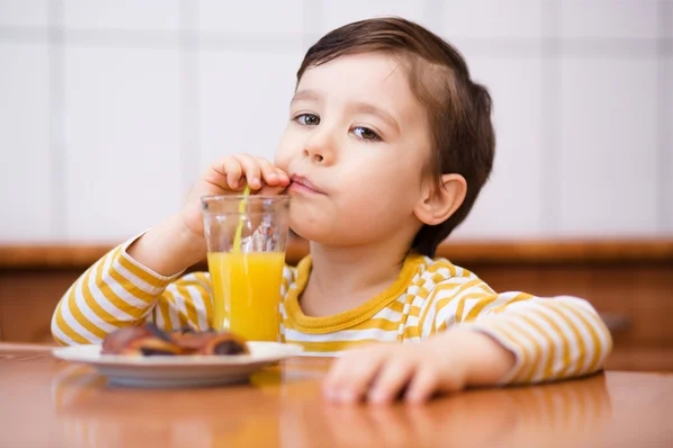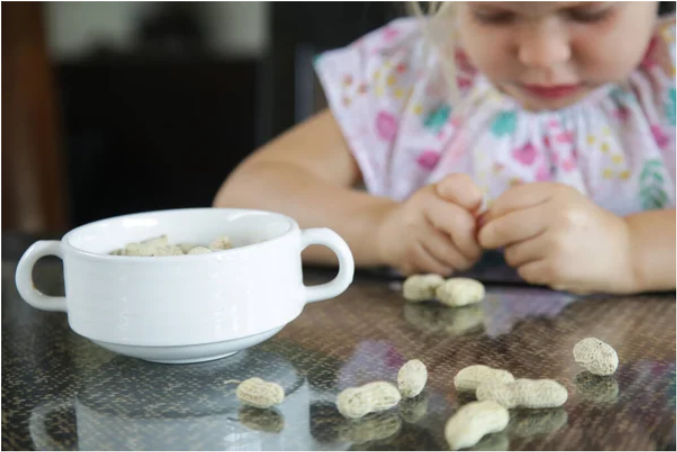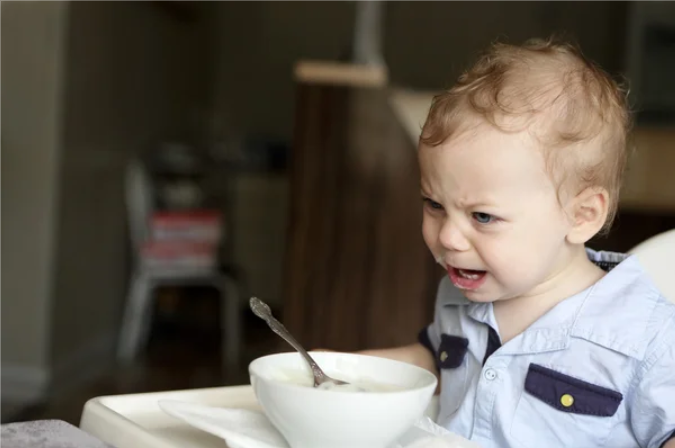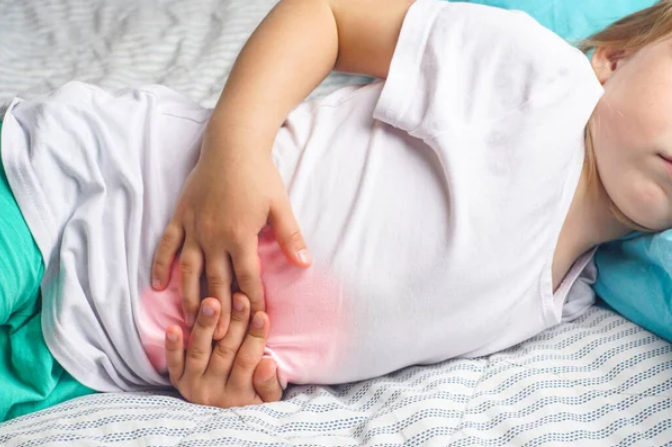8 Possible Reasons for Abdominal Pain in Children?
It’s never easy to see your child in pain, especially when it comes to abdominal discomfort. Childhood abdominal pain is a common occurrence that can leave both you and your little one feeling helpless and frustrated. Understanding the causes is crucial for effective management and relief.
Entirely Kids Pediatrics is dedicated to helping parents navigate these challenging situations. With her extensive expertise in pediatric care, Dr. Leung offers comprehensive assessments and treatments tailored to your child’s specific needs. Her commitment is to provide the highest quality care and guidance for families dealing with childhood abdominal pain. Consulting a Frisco pediatrician can enhance the support and care your child receives, ensuring their health and well-being are prioritized.
This guide will explore eight potential reasons behind your child’s abdominal pain, from the mundane to the more serious. By leveraging the knowledge and experience of Entirely Kids Pediatrics, you’ll gain insights into symptoms, causes, and treatments, empowering you to make informed decisions about your child’s health and well-being.
1. Constipation
Constipation, the bane of many a child’s existence, is one of the most common causes of abdominal pain in children. When your little one’s bowel movements become infrequent or difficult to pass, it can lead to a buildup of stool in the intestines, causing discomfort, bloating, and even severe abdominal pain.
Symptoms of Constipation
- Infrequent bowel movements (less than three per week)
- Hard, dry, or lumpy stools
- Difficulty or pain when passing stool
- Abdominal bloating or swelling
- Decreased appetite
- Irritability or moodiness
Causes of Constipation
Several factors can contribute to constipation in children, including:
- A diet low in fiber and fluids
- Lack of physical activity
- Stress or anxiety
- Certain medications
- Changes in routine or environment
Treatment for Constipation
Fortunately, constipation is often easily treated with simple lifestyle changes and home remedies:
- Encourage your child to drink plenty of water and other fluids throughout the day
- Increase their intake of high-fiber foods, such as fruits, vegetables, and whole grains
- Establish a regular bathroom routine and encourage your child to take their time on the toilet
- Consider using a gentle laxative or stool softener under the guidance of your pediatrician
2. Gas and Bloating

Another common culprit behind childhood abdominal pain is gas and bloating. When air becomes trapped in the digestive system, it can cause discomfort, cramping, and even sharp pains in the abdomen.
Symptoms of Gas and Bloating
- Abdominal pain or discomfort
- A feeling of fullness or pressure in the abdomen
- Passing gas frequently
- Burping or belching
- Abdominal distension or swelling
Causes of Gas and Bloating
Gas and bloating can be caused by a variety of factors, such as:
- Swallowing air while eating or drinking
- Consuming gas-producing foods, like beans, lentils, and certain vegetables
- Lactose intolerance or other food sensitivities
- Constipation
- Digestive disorders, such as irritable bowel syndrome (IBS)
Treatment for Gas and Bloating
To help alleviate your child’s gas and bloating, try the following:
- Encourage them to eat slowly and chew their food thoroughly
- Avoid giving them carbonated drinks or foods that may cause excessive gas
- Try using over-the-counter simethicone drops to help break up gas bubbles in the digestive tract
- If you suspect lactose intolerance or another food sensitivity, consult with your pediatrician about dietary changes or tests
3. Gastroenteritis
Viral gastroenteritis, often referred to as the “stomach flu,” is a highly contagious infection that can cause abdominal pain, nausea, vomiting, and diarrhea in children. This unpleasant illness is usually caused by viruses such as rotavirus or norovirus and can spread quickly in schools and daycare centers.
Symptoms of Gastroenteritis
- Abdominal pain or cramping
- Nausea and vomiting
- Watery diarrhea
- Low-grade fever
- Loss of appetite
- Dehydration (signs include dry mouth, decreased urine output, and lethargy)
Causes of Gastroenteritis
Gastroenteritis is typically caused by viral infections, such as:
- Rotavirus
- Norovirus
- Adenovirus
- Astrovirus
Less commonly, bacterial infections like Salmonella or E. coli can also lead to gastroenteritis.
Treatment for Gastroenteritis
In most cases, gastroenteritis resolves on its own within a few days. However, it’s crucial to keep your child hydrated to prevent complications:
- Offer small, frequent sips of clear fluids, such as water, clear broths, or oral rehydration solutions
- Gradually reintroduce bland, easy-to-digest foods like bananas, rice, applesauce, and toast (the BRAT diet) as your child’s appetite returns
- Avoid dairy products, sugary drinks, and fatty or spicy foods until their symptoms improve
- If your child shows signs of dehydration or their symptoms worsen, seek medical attention
4. Food Intolerances and Allergies

Food intolerances and allergies can be sneaky sources of abdominal pain in children. When your child’s body has difficulty digesting certain foods or reacts to specific proteins, it can lead to a range of uncomfortable symptoms, including stomach pain.
Symptoms of Food Intolerances and Allergies
- Abdominal pain or discomfort
- Bloating or gas
- Diarrhea or constipation
- Nausea or vomiting
- Skin rashes or hives (in the case of allergies)
- Difficulty breathing or wheezing (in severe allergic reactions)
Common Food Intolerances and Allergies
Some of the most common food intolerances and allergies in children include:
- Lactose intolerance (difficulty digesting milk sugar)
- Gluten intolerance or celiac disease (reaction to a protein found in wheat, barley, and rye)
- Allergies to peanuts, tree nuts, eggs, soy, or shellfish
Diagnosing and Managing Food Intolerances and Allergies
If you suspect your child has a food intolerance or allergy:
- Keep a food diary to identify potential trigger foods
- Consult with your pediatrician about testing options, such as blood tests, skin prick tests, or elimination diets
- Work with a registered dietitian to ensure your child’s diet remains balanced and nutritious while avoiding problematic foods
- If your child has a severe food allergy, always carry an epinephrine auto-injector (EpiPen) and educate caregivers on its use
5. Appendicitis
Appendicitis is a potentially life-threatening condition that occurs when the appendix becomes inflamed and infected. This small, finger-shaped pouch attached to the colon can cause severe abdominal pain if left untreated, making it a serious cause for concern in children.
Symptoms of Appendicitis
- Sudden, severe pain that begins near the belly button and shifts to the lower right side of the abdomen
- Pain that worsens with movement, coughing, or deep breaths
- Fever
- Nausea and vomiting
- Loss of appetite
- Abdominal swelling or tenderness
- Constipation or diarrhea
Causes of Appendicitis
Appendicitis occurs when the appendix becomes blocked by:
- Hardened stool
- Enlarged lymphoid follicles
- Tumors
- Parasites
- Foreign objects
When the appendix is blocked, bacteria can multiply rapidly, causing inflammation and infection.
Treatment for Appendicitis
Appendicitis is a medical emergency that requires prompt treatment:
- If you suspect your child has appendicitis, seek medical attention immediately
- Diagnosis typically involves a physical exam, blood tests, and imaging studies like an ultrasound or CT scan
- Treatment usually involves surgical removal of the appendix (appendectomy)
- In some cases, antibiotics may be used to treat the infection before surgery
6. Urinary Tract Infections
Urinary tract infections (UTIs) are a common cause of abdominal pain in children, particularly in the lower abdomen and pelvic area. These infections occur when bacteria enter the urinary system and multiply, causing inflammation and discomfort.
Symptoms of UTIs
- Abdominal pain or discomfort, especially in the lower abdomen or pelvic area
- Frequent, urgent, or painful urination
- Burning sensation when urinating
- Foul-smelling or cloudy urine
- Blood in the urine
- Fever
- Bedwetting in previously toilet-trained children
Causes of UTIs
UTIs are typically caused by bacteria, such as E. coli, that enter the urinary tract through the urethra. Risk factors for UTIs in children include:
- Poor hygiene habits
- Holding in urine for long periods
- Constipation
- Anatomical abnormalities in the urinary tract
- Bubble baths or tight-fitting clothing
Treatment for UTIs
If you suspect your child has a UTI, consult with your pediatrician for proper diagnosis and treatment:
- Diagnosis usually involves a physical exam, urine sample analysis, and sometimes imaging studies
- Treatment typically involves a course of antibiotics to eliminate the bacterial infection
- Encourage your child to drink plenty of fluids to help flush out the bacteria
- Teach proper hygiene habits, such as wiping front to back and avoiding bubble baths, to prevent future infections
7. Stress and Anxiety

Believe it or not, stress and anxiety can manifest as physical symptoms, including abdominal pain in children. The mind-gut connection is a powerful one, and when your child is feeling overwhelmed or worried, their tummy may bear the brunt of their emotional distress.
Symptoms of Stress and Anxiety-Related Abdominal Pain
- Recurrent abdominal pain or discomfort
- Pain that is often accompanied by headaches, fatigue, or sleep disturbances
- Pain that seems to worsen with stress or anxiety-provoking situations
- Nausea or changes in appetite
- Diarrhea or constipation
Causes of Stress and Anxiety in Children
Children can experience stress and anxiety for a variety of reasons, such as:
- Academic pressures or school-related issues
- Family conflicts or changes in family structure
- Social challenges, like bullying or difficulty making friends
- Traumatic events or significant life changes
- Genetics and brain chemistry
Managing Stress and Anxiety-Related Abdominal Pain
If you suspect your child’s abdominal pain is related to stress or anxiety:
- Talk to your child openly and honestly about their feelings and experiences
- Help them identify and express their emotions in healthy ways, such as through art, journaling, or physical activity
- Teach relaxation techniques, like deep breathing or progressive muscle relaxation
- Establish a consistent daily routine that includes balanced meals, regular exercise, and sufficient sleep
- Consider working with a mental health professional who specializes in children’s emotional well-being
8. Inflammatory Bowel Disease
Inflammatory bowel disease (IBD) is a group of chronic disorders that cause inflammation in the digestive tract, leading to abdominal pain, diarrhea, and other uncomfortable symptoms. The two main types of IBD are Crohn’s disease and ulcerative colitis, both of which can affect children. Incorporating physical activity in children can be beneficial as part of a comprehensive management plan for IBD, helping to improve overall health and well-being.
Symptoms of IBD
- Abdominal pain or cramping
- Chronic diarrhea, sometimes with blood or mucus
- Weight loss or poor growth
- Fatigue
- Fever
- Mouth sores
- Joint pain or swelling
- Skin rashes or lesions
Causes of IBD
The exact cause of IBD is not fully understood, but several factors are thought to contribute:
- Genetics
- Immune system dysfunction
- Environmental triggers, such as infections or diet
- Gut bacteria imbalances
Diagnosing and Managing IBD
If you suspect your child has IBD, consult with your pediatrician or a pediatric gastroenterologist:
- Diagnosis typically involves a combination of blood tests, stool tests, imaging studies, and endoscopic procedures
- Treatment may include medications to reduce inflammation, such as aminosalicylates, corticosteroids, immunomodulators, or biologic therapies
- Dietary changes, such as a low-fiber or low-residue diet, may help manage symptoms during flare-ups
- Regular follow-up with a pediatric gastroenterologist is essential to monitor the condition and adjust treatment as needed
Concerned about your child’s abdominal pain? Our Same-Day Sick Visits ensure prompt attention and care to address your child’s health needs effectively.
Conclusion
Childhood abdominal pain can be a perplexing and distressing experience for both children and their parents. Understanding the various potential causes behind your child’s discomfort allows you to take proactive steps to alleviate their symptoms and promote their overall well-being.
By gaining insights into the causes and treatments of abdominal pain, you empower yourself to make informed decisions for your child’s health. While many cases can be managed at home, always consult with your pediatrician if symptoms persist, worsen, or are accompanied by other concerning signs. Ensuring primary care for children is crucial in these situations to provide accurate diagnosis and appropriate treatment, safeguarding your child’s health.
For expert advice and support, reach out to Entirely Kids Pediatrics. Contact us at 469-425-3600 today to ensure your child receives the best possible care.
Common Questions About Childhood Abdominal Pain
How can I tell if my child’s stomach pain is serious?
Serious stomach pain in children often comes with other symptoms. Watch for fever, vomiting, diarrhea, or pain that doesn’t go away. If your child’s pain is severe, lasts more than a day, or they can’t keep food down, call your doctor. Trust your instincts – if you’re worried, it’s always best to get professional advice.
What’s the most common cause of stomach pain in kids?
Constipation is a frequent cause of stomach pain in children. It can make kids feel bloated and uncomfortable. Other common reasons include gas, food intolerance, or mild stomach bugs. Most of the time, these issues aren’t serious and can be managed at home with rest and proper care.
Can stress cause stomach pain in children?
Yes, stress can definitely cause stomach pain in kids. Children might feel stomach discomfort when they’re anxious about school, friends, or family issues. This type of pain is real but not dangerous. Helping your child relax and talking about their worries can often ease the pain.
When should I take my child to the ER for stomach pain?
Take your child to the ER if they have severe pain, especially if it’s on the lower right side of the belly. Other reasons include if your child has a high fever, is vomiting blood, has bloody stools, or seems very ill. Also, go to the ER if your child’s belly is swollen and hard to touch, or if they faint or have trouble staying awake.
How can I help my child prevent frequent stomach aches?
To help prevent stomach aches, encourage your child to eat a balanced diet with plenty of fruits, vegetables, and water. Regular exercise can also help. Teach them to use the bathroom regularly and not hold it in. Managing stress through relaxation techniques or talking about problems can also reduce stomach pain. If aches are frequent, keep a food diary to spot any trigger foods.

